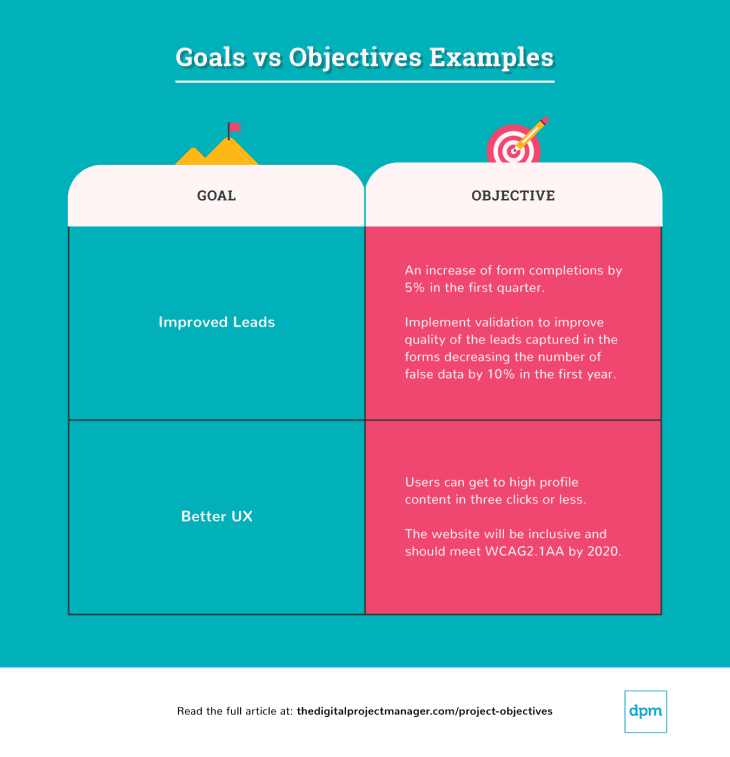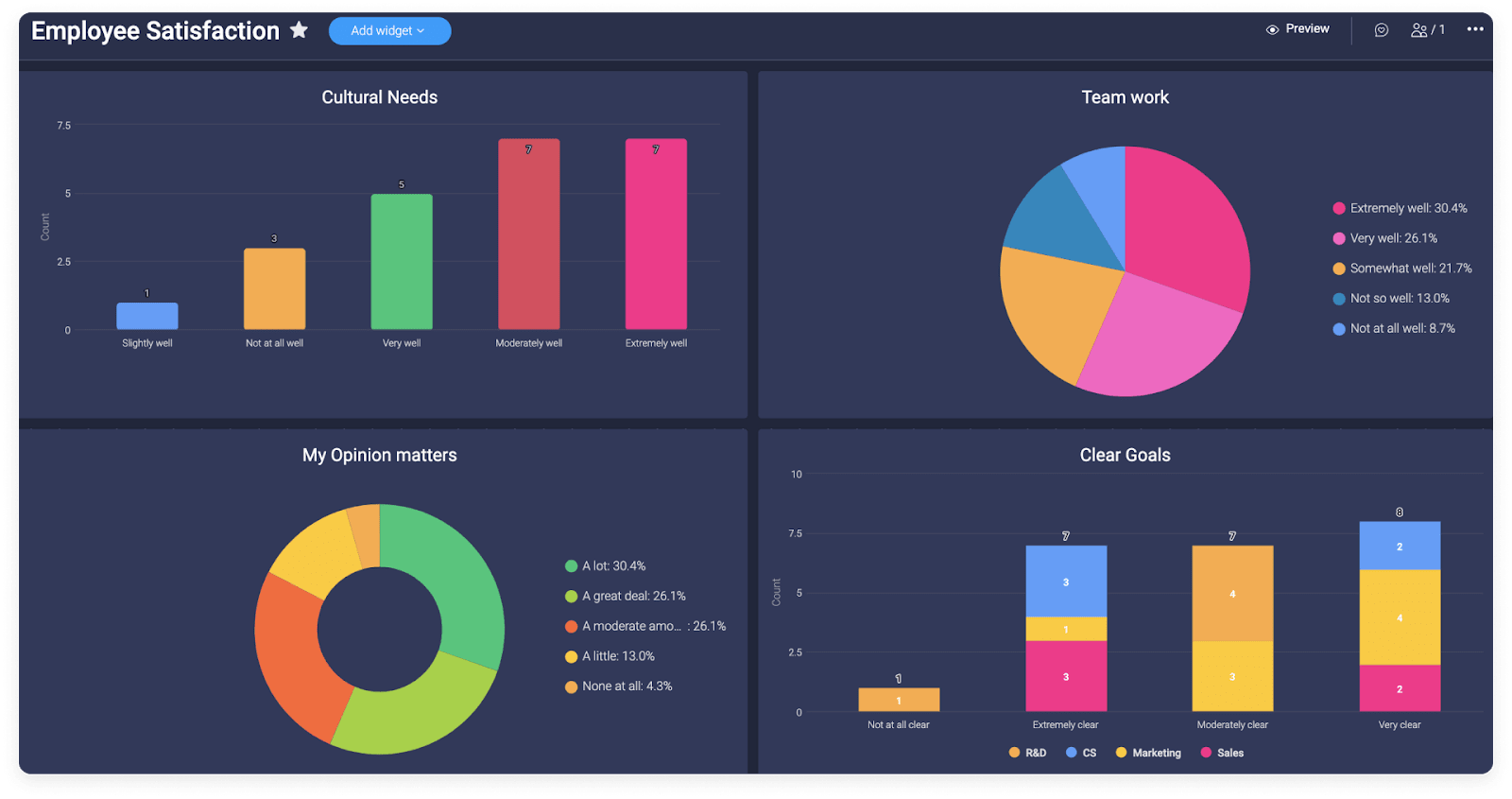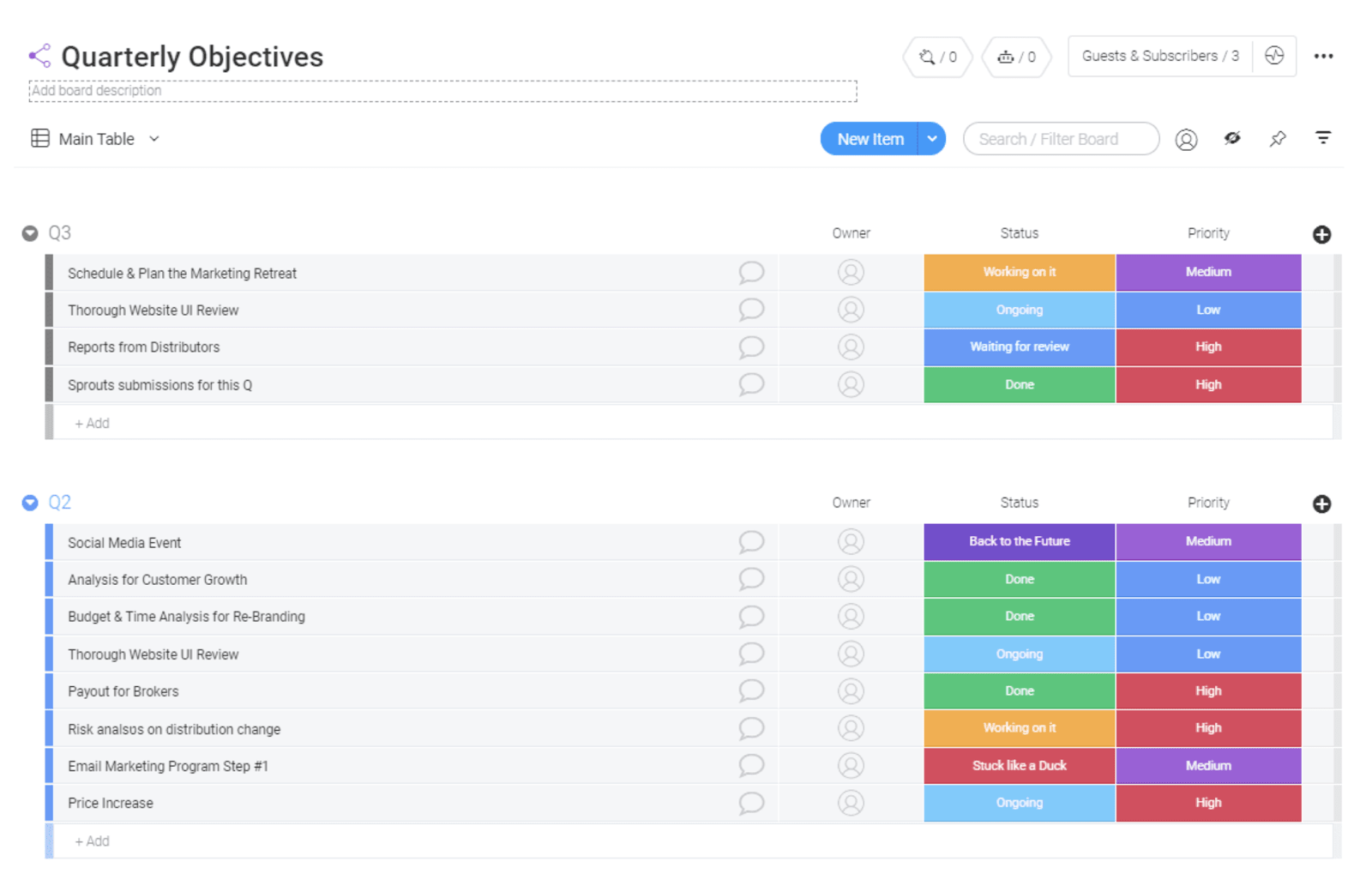What’s the difference between the terms, goals, and objectives?
If you thought they were synonyms, you’re not alone. Most people think that — including us before we saw the light.
To be clear, they’re not the same thing, and you shouldn’t use them interchangeably.
Why does it matter?
Because clarity is everything in project management.
In this article, we’ll go beyond settling the difference between the words goal and objective. We’ll teach you how to set smarter objectives and leverage technology to take your project from idea to desired results in record time.
Goal vs. objective: what’s the difference?
Goals are vague.
A goal provides high-level context of what a project should accomplish. Typically, it aligns with the company goals and mission statement.
Simply put, it’s the desired outcome you want.
In project management, that’s the first question you’ll ask your client or boss when beginning a new project or business plan.
Goals act as North Stars for your project. If everyone on the team understands the goal, they can keep that at the forefront of their minds when taking specific action.
Goals are an essential part of life, but they only speak to the end results. They don’t tell you how you’re going to achieve success.
That’s why if you want to achieve your goals, it’s best to pair them with objectives.

Objectives are specific.
They clearly define what your team needs to do (and how!) to achieve the overall goal.
Objectives provide micro context that makes delivering the project easier, since they describe tangible products, outcomes, and deliverables.
For instance, if our goal is to get a human to Mars, some objectives might be:
- Complete the mission by 2025.
- Return the astronauts safely back to Earth.
- Collect soil samples of Martian dust and rocks for analysis.
Setting S.M.A.R.T. objectives
Speaking of structure, one of the best things you can do when setting objectives is to follow the S.M.A.R.T. framework, which provides more intention to your objectives by making them specific, measurable, attainable, relevant, and time-bound.
With S.M.A.R.T. objectives, your team can put together an effective and concrete action plan designed to meet any goal or desired outcome.
Let’s examine each facet of the S.M.A.R.T. framework a bit more closely:
Specific
Specificity means less ambiguity and more direction when it comes to what you want.
Ideally, your objective should so specific that anyone who reads it will interpret it the same way you intended. It’s a good idea to include numbers, statistics, and deadlines to add specificity to your task or action.
Measurable
A measurable objective answers the question “how do you know it meets expectations?”
It further defines your objective using some accessible terms such as quality, quantity, costs, time frames, or frequency.
Measurable objectives let you know whether you’re making progress or not. It makes it easy to compare or evaluate against a defined standard.
Again, numbers are everything here. Having reports, dashboards, and/or a specific KPI make it easy to track your progress and report to stakeholders (especially once you have reached the goal and want to review everything).
A frequency measurement, for example, could run on a daily or weekly basis.
Attainable
Also known as achievable, attainable answers the question, “can your team do it given the people, resources, and timeframe?”
Attainable balances realistic expectations with delivering satisfaction. Challenging yourself is good, but you don’t want to go overboard. You should strike a balance between making your team and your stakeholders happy.
This helps you prioritize what is reasonable to complete in the short term vs. longer-term items that require more input.
Relevant
Relevant feels obvious, but it’s a bit existential in nature. It answers the question, “should it be done and why?” How will it impact the business’ goal? A good guiding principle here is determining whether the objective aligns with the greater project and company strategy.
If you find the objective or task is achievable but isn’t relevant to warrant its completion, then you scrap it. Your focus should be setting an objective that propels you closer to your end goal.
Time-bound
Time-bound refers to identifying an objective’s scheduled checkpoints or endpoints to provide a sense of urgency and help measure whether an objective is on-time, late, or completed.
Having deadlines helps your team prioritize and gives your stakeholders peace of mind as you’re working.This can help you create your project’s schedule and accurately distribute tasks based on workload capabilities.
What’s an example of a SMART objective?
Now that we’ve broken down how to create S.M.A.R.T. objectives, it’s time to show an example that really drives the point home.
Goal: boost the satisfaction levels for customers going through training at a property management SaaS company.
Objective: roll out a faster online case system that will replace email support by January 1st that cuts average response times to no more than 2 hours.
Now, let’s look at a breakdown of the objectives and how each meets the S.M.A.R.T. framework criteria:
- The objective is specific because it points out exactly what will happen and by what date.
- The objective is measurable because you can easily track the case response times to ensure they’re not going over the 2-hour mark on average.
- The objective is achievable because a new case system provides the means to help clients more quickly than email did before.
- The objective is relevant because an online case system directly contributes to lowering response times and therefore improving customer satisfaction.
- The objective is time-bound because you’ve set a deadline that helps the team prioritize the tasks necessary to achieve the objective and, ultimately, the goal.
Crush your goals and objectives with monday.com
Setting goals is easy.
Setting objectives? Thats a bit harder.
That’s where monday.com comes in.
monday.com is a digital workspace — a complete Work OS that helps you stay on top of your goals, your objectives, and the daily tasks that help you achieve both.
The beautiful dashboards make it easy to see any progress toward your goal at a glance.

Our library of 200+ custom templates makes it easy to get started.
Try breaking down your objectives into a format your whole team can easily follow with our Quarterly Objectives template:

Beyond dashboards and templates that make it easy to collaborate, monday.com has a wealth of other features you’re sure to find useful:
- 30+ drag and drop column types that make it easy to customize the look and workflow of your objective and task list.
- 8 unique data visualizations, including workload and Gantt charts that make it easy to visualize who’s working on what and how you’re making progress on your objectives in measurable steps.
- Limitless automation recipes that eliminate human error and cut down on manual work so that you can focus energy on achieving your ultimate goal.
- 40+ integrations so your team always has access to the data they need to complete their specific objective.
What’s your next objective?
Now that you know goals and objectives aren’t the same things, you can tell your friends.
Together, we can rid the world of misinformation once and for all. Cue the dramatic music…
Really, we hope you walked away with some know-how on better objectives and are on the path to achieving your goals.
No matter your intention, just know that monday.com has your back. Get started today with a no-hassle, 14-day free trial.

